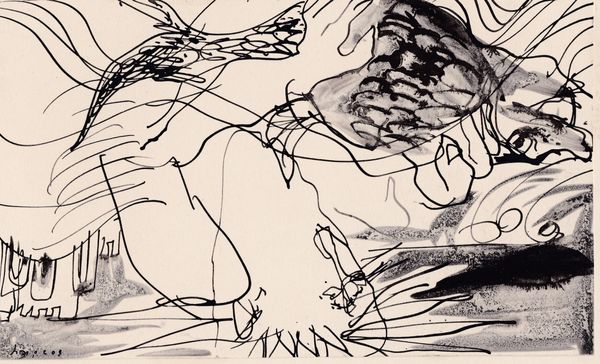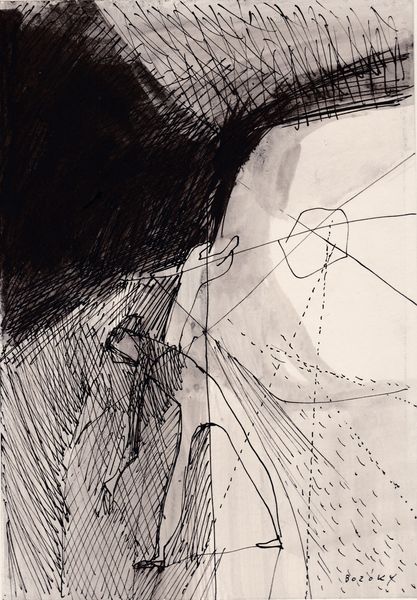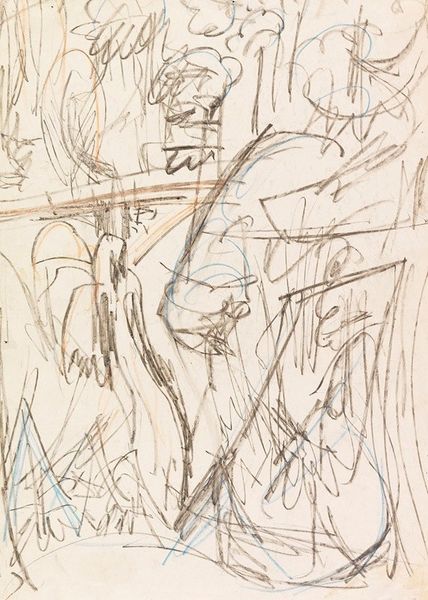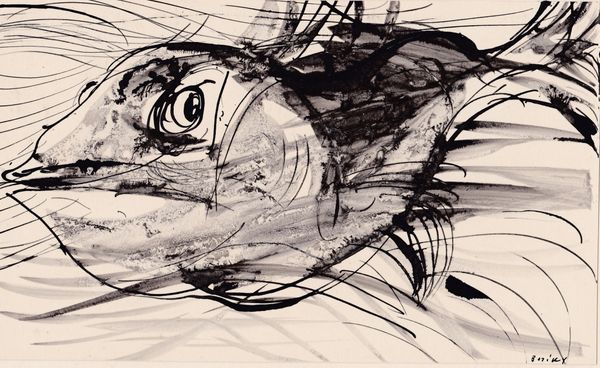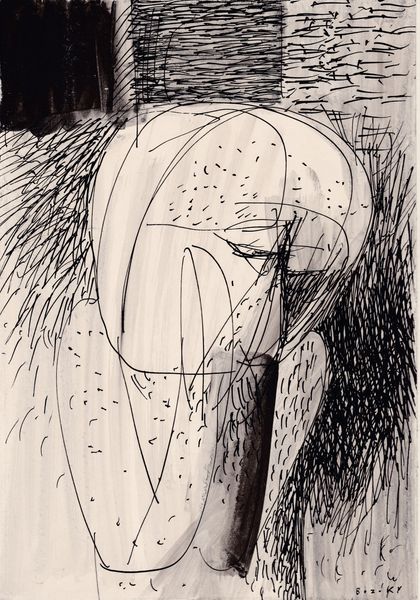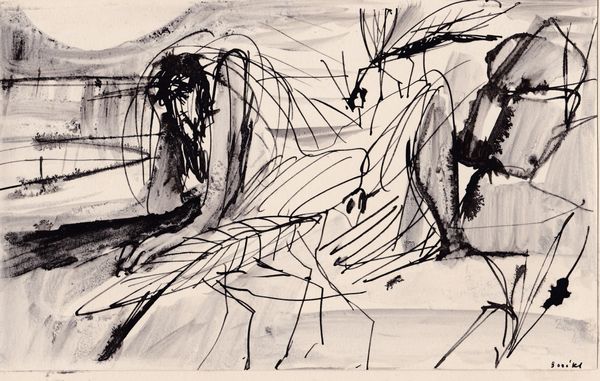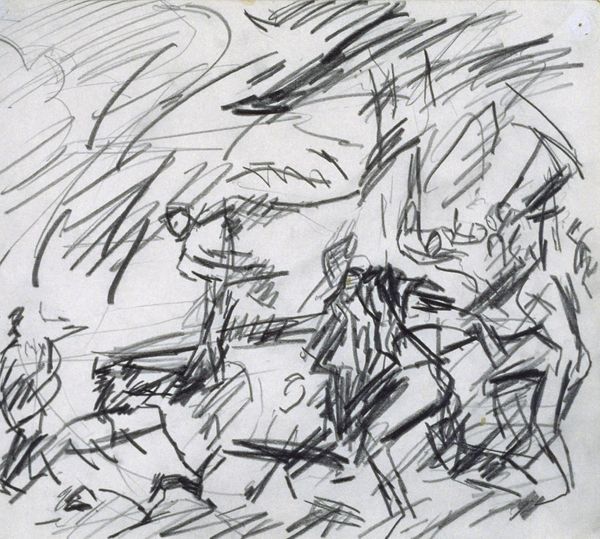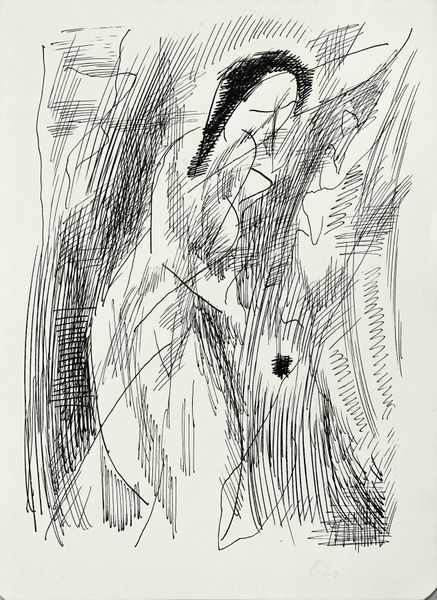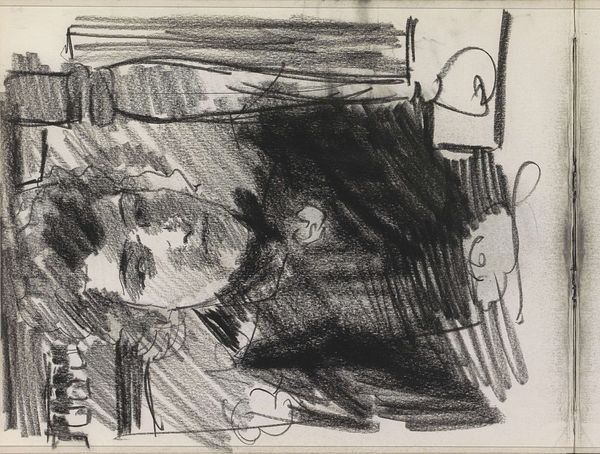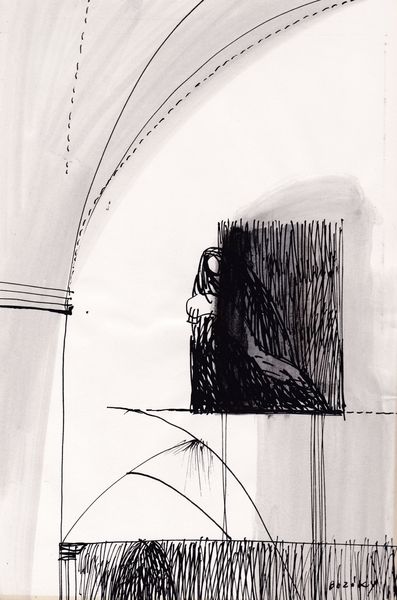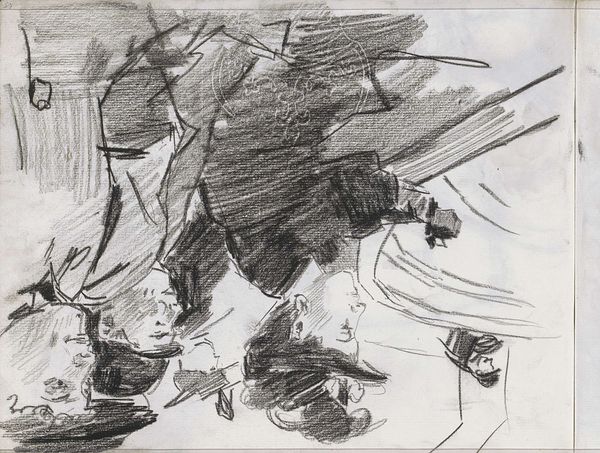
drawing, ink
#
drawing
#
narrative-art
#
prophet
#
figuration
#
ink
#
line
#
monochrome
Dimensions: 11 x 18 cm
Copyright: Maria Bozoky,Fair Use
Curator: Looking at "Babits: The book of Jonah II" by Maria Bozoky, the immediate impression is one of chaotic movement. There's this visceral energy rendered through bold ink strokes. What stands out to you, Editor? Editor: I'm struck by how raw the materials appear. You see the gestural marks, the immediacy of the ink on the page. The labor is quite apparent. There's a roughness here that connects to the biblical narrative's themes of struggle and divine confrontation. Curator: Precisely. Considering Bozoky's choice to depict the story of Jonah, we can understand this piece as an engagement with themes of disobedience and repentance, which resonate deeply with human struggles against oppressive power structures and societal expectations. Editor: It's also a very stark depiction. There’s very little tonal variation; Bozoky relies almost entirely on line work to convey form and space. This directness in material translates, for me, to the direct confrontation Jonah has with his maker and his own destiny. The drawing process mirrors this kind of pressure. Curator: Right. It is compelling how this artwork embodies the tension between divine will and individual agency. The figure of Jonah is central, overwhelmed by the monstrous whale—a clear power dynamic. What does this starkness signal within the visual language of power relations? Editor: I would consider the lack of shading. The minimal treatment of Jonah emphasizes the figure as more of an outline or shell. Is it less about representing an individual than representing labor forced upon a reluctant subject? A form hollowed out, rather than a personality explored. Curator: That interpretation speaks volumes about human vulnerability when facing historical or political upheaval. One element that warrants careful attention is the overall lack of clarity. How does this obscurity surrounding the subject matter influence viewers? Editor: It feels unresolved and unstable, certainly. I find this ties into that sense of constant reformation we have been discussing – of labor constantly demanded to change our world – never solidifying into any singular thing, instead constantly evolving with the drawing. It presents more questions about process and intent. Curator: Looking at the image through these lenses enriches our appreciation for Bozoky’s nuanced approach, don’t you agree? It moves beyond simple representation into profound cultural commentary. Editor: I would add a vital component in viewing artwork as part of larger manufacturing questions. The artist here has certainly forced me to see materials and art-making anew within historical concepts of change.
Comments
No comments
Be the first to comment and join the conversation on the ultimate creative platform.

